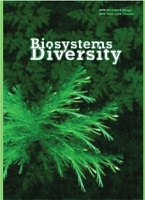Landsat archive for detection of change in Mediterranean ecosystems: The case of Northern Morocco
Landsat archive for detection of change in Mediterranean ecosystems: The case of Northern Morocco
Author(s): Y. Bouziani, S. Lahssini, S. Moukrim, A. Azedou, H. Mharzi-Alaoui, A. Benabou, L. ZidaneSubject(s): Physical Geopgraphy, Regional Geography, Environmental Geography, Environmental interactions
Published by: Дніпропетровський національний університет імені Олеся Гончара
Keywords: biodiversity monitoring; ecosystem structure; remote sensing; land cover; time series; Google Earth Engine;
Summary/Abstract: The study of changes in land cover provides a better understanding of the interactions between humans and natural ecosystems. In this context, the present study focused on the dynamics of natural ecosystems in the Rif region of Northern Morocco. The methodology was based on the inspection and visual interpretation of Landsat and Google Earth image captures, the time series of five Landsat 4-8 image bands, and the Tasseled Cap indices for a random sample of 500 points from 1984 to 2022. The study found that changes affected practically the whole study region over the study period, with around a third of them being ignored due to their very tiny magnitudes or being false positives. The findings demonstrated a general declining trend in the measured changes, indicating a reduction in pressure on different ecosystems. Furthermore, this tendency may be due in part to the availability of Google Earth images during the 2000s, which has significantly reduced the number of false positives. In terms of the year of first change, only 5.7% of pixels experienced their first events after the year 2000, implying that these pixels underwent no change for at least the first 16 years of the study period. On the other hand, 2.5% of the pixels had their last events during the first ten years and have thus remained unmodified for at least 27 years. For the year 2020, the confidence rating of the visual land cover categorization is medium to high for 88.9% of pixels using high-resolution Google Earth photos, whereas the classification quality was inadequate for 64% of pixels in 1984. Despite the stresses on the ecosystems structured by shrubs/shrubs, forests, and herbaceous/shrubs caused by the different disturbances identified, the majority of these ecosystems have not been converted to new land cover classes. According to the study, agriculture is the primary driving force underlying the conversion of forests, herbaceous/shrublands, and even shrublands/shrublands. The area increases for the latter three ecosystems represent, on the one hand, their ability to regenerate themselves and, on the other, Morocco's restoration efforts.
Journal: Biosystems Diversity
- Issue Year: 31/2023
- Issue No: 4
- Page Range: 428-435
- Page Count: 8
- Language: English

